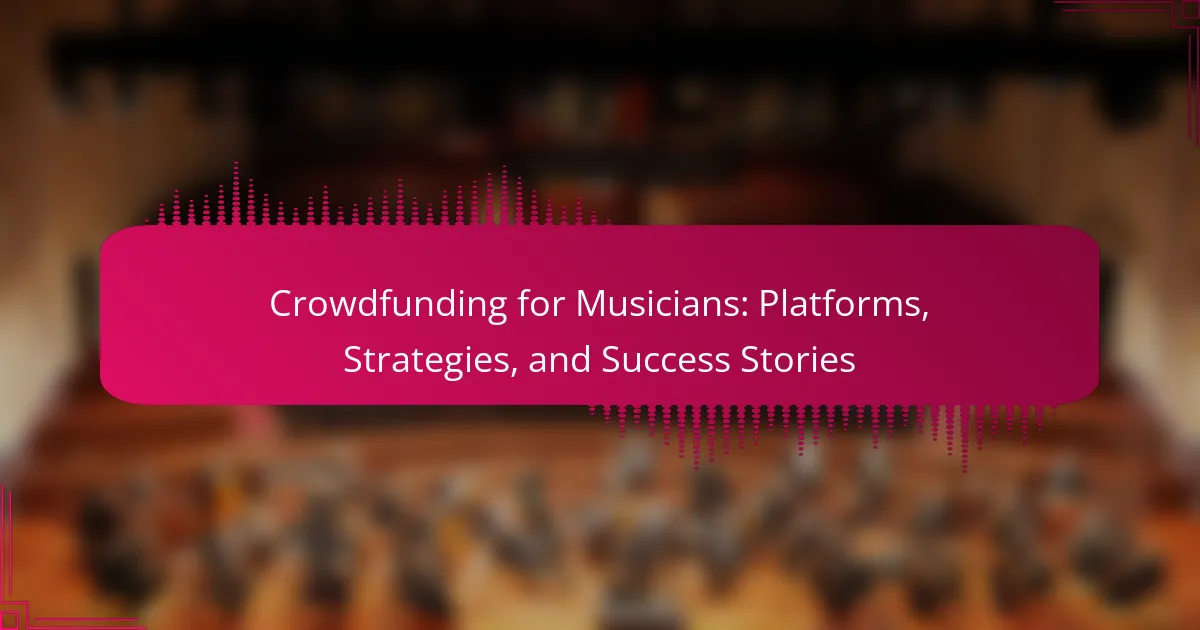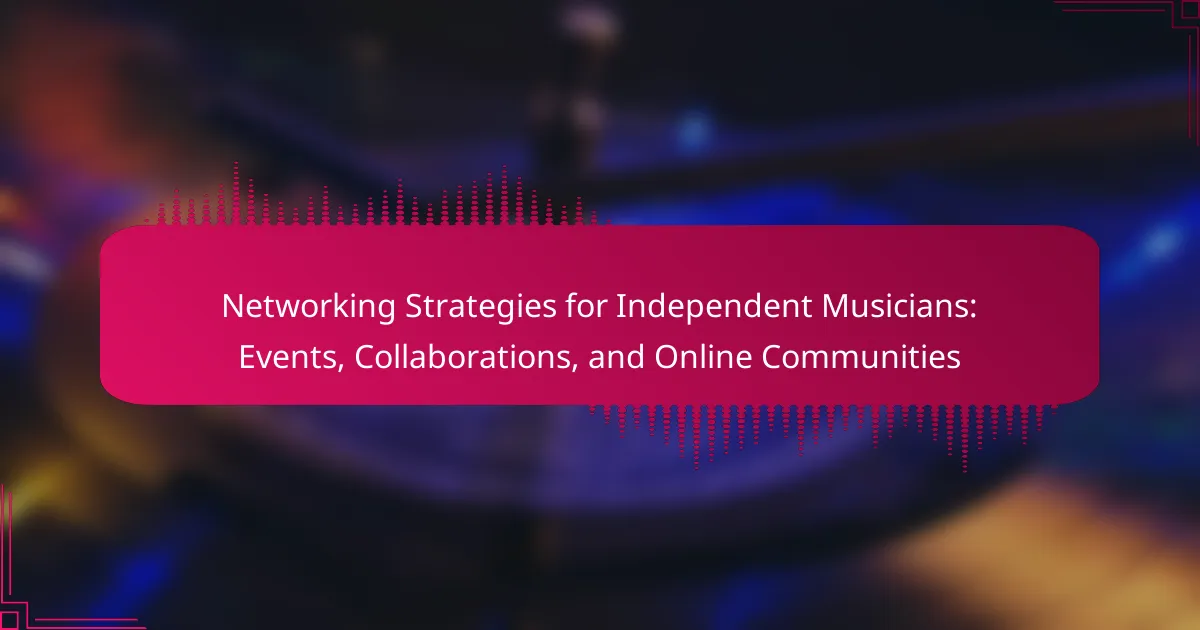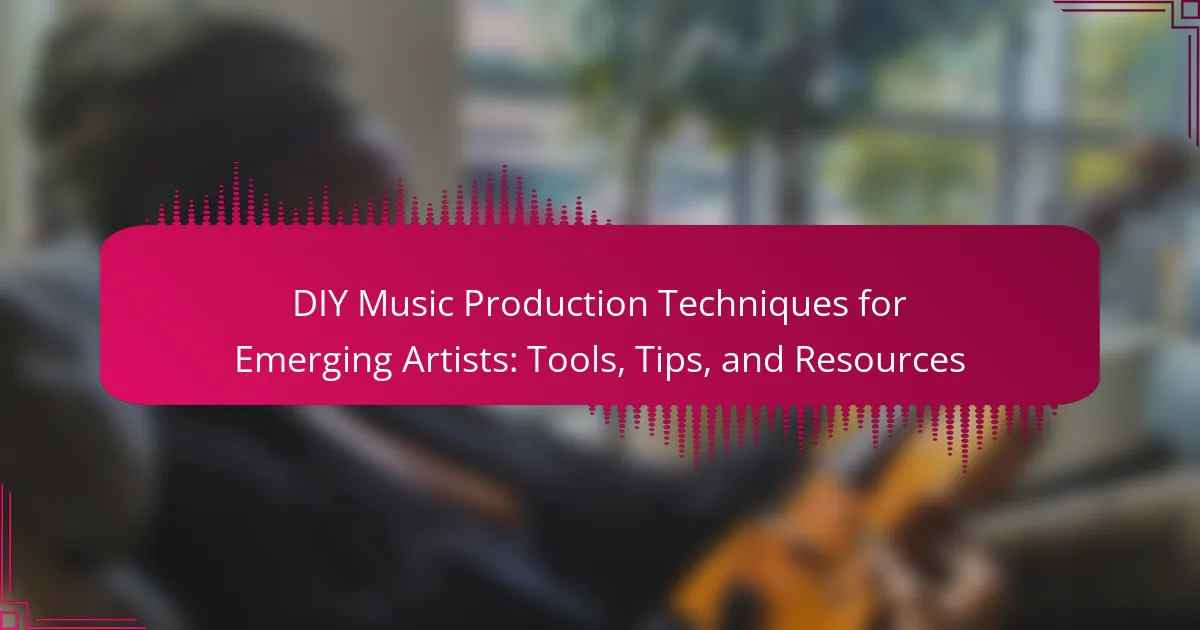Independent musicians face the challenge of effectively distributing their music to maximize exposure and revenue. This article explores various distribution methods, including digital platforms, social media, and physical sales. It examines the costs associated with each approach and highlights essential tools for successful distribution. Additionally, it addresses audience engagement and regional differences that impact distribution strategies.

What are the most effective distribution methods for independent musicians?
Independent musicians can effectively distribute their music through digital platforms, social media, and physical sales. Digital distribution services like DistroKid and TuneCore offer broad reach and affordability. Social media platforms facilitate direct engagement with fans, enhancing visibility. Additionally, selling physical copies at live shows creates a personal connection and generates revenue. Each method has unique costs and benefits, making a combination ideal for maximizing exposure and sales.
How do digital platforms influence music distribution?
Digital platforms significantly enhance music distribution by providing independent musicians with accessible channels to reach audiences. These platforms allow artists to bypass traditional gatekeepers, reducing costs and increasing control over their music. Services like Spotify, Apple Music, and Bandcamp facilitate global reach and offer analytics to track listener engagement. Additionally, social media platforms enable direct interaction with fans, fostering community and loyalty. As a result, independent musicians can effectively promote their work and monetize their art in a competitive landscape.
Which traditional methods remain relevant for independent musicians?
Traditional methods remain relevant for independent musicians, including live performances, physical album sales, and networking.
Live performances allow musicians to connect directly with audiences, enhancing fan loyalty. Physical album sales, while declining, still appeal to collectors and dedicated fans. Networking through local events and industry gatherings fosters valuable relationships and opportunities.
These methods, though complemented by digital strategies, retain their importance in building a sustainable music career.
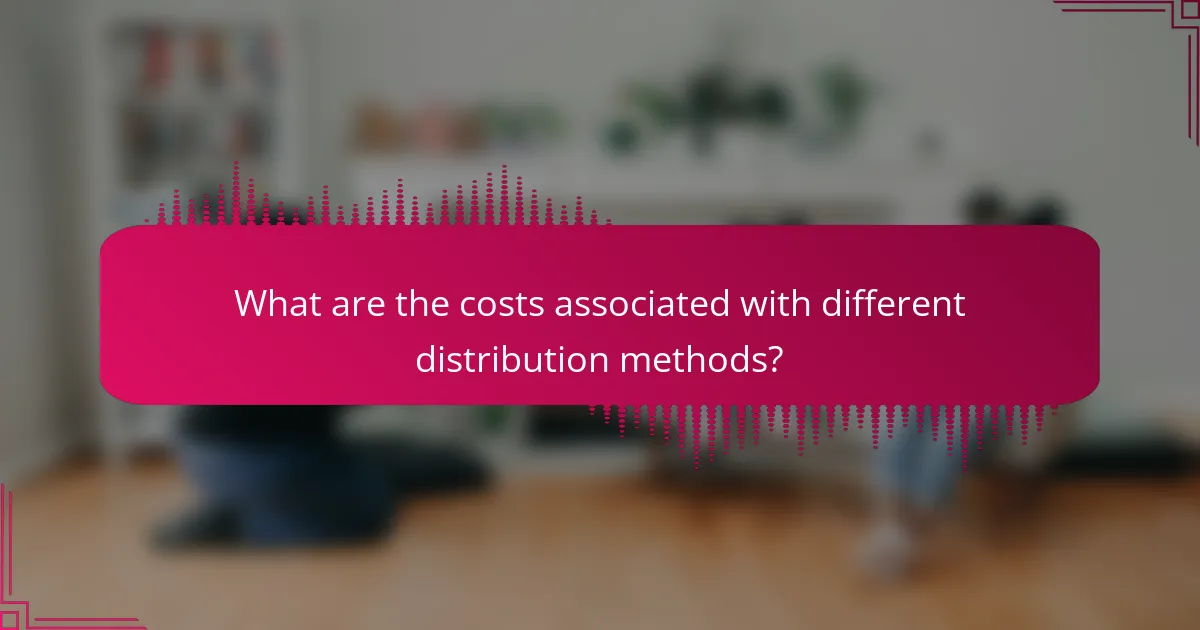
What are the costs associated with different distribution methods?
The costs associated with different distribution methods for independent musicians vary significantly. Digital distribution typically incurs fees ranging from 10% to 30% of revenue, while physical distribution can involve manufacturing costs of $1 to $5 per unit, plus shipping. Direct-to-fan sales often have lower fees, around 5% to 10%. Additionally, marketing and promotional expenses should be considered, which can range from hundreds to thousands of dollars depending on the campaign scope. Each method’s cost structure impacts overall profitability and should align with the musician’s goals and audience.
How do fees vary across popular digital distribution services?
Fees vary significantly across popular digital distribution services. For instance, DistroKid charges an annual fee starting at $19.99, while TuneCore takes a per-release fee of $9.99 for singles and $29.99 for albums. CD Baby has a one-time fee of $9.95 for singles and $29 for albums but takes a percentage of sales. These variations impact independent musicians’ budgeting for distribution.
What hidden costs should independent musicians consider?
Independent musicians should consider hidden costs such as distribution fees, marketing expenses, and production costs. These can significantly impact overall revenue. For example, digital distribution services often charge a percentage of sales or a flat fee. Additionally, promotional efforts can require investment in advertising, social media campaigns, and music videos. Understanding these costs is crucial for effective financial planning.
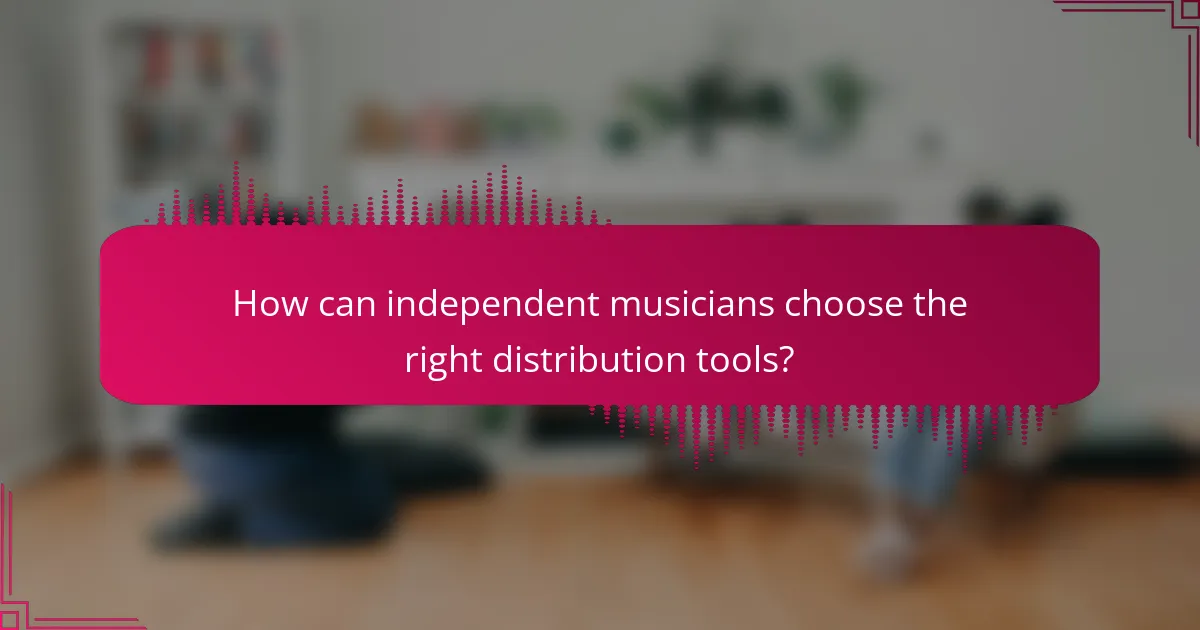
How can independent musicians choose the right distribution tools?
Independent musicians can choose the right distribution tools by evaluating their specific needs and budget. Key factors include the platform’s reach, ease of use, and costs involved. Popular distribution tools like DistroKid, TuneCore, and CD Baby vary in pricing and features, offering options for single releases or subscriptions. Consider the unique attributes of each service, such as royalty rates and additional promotional tools, to find the best fit for your music career.
What features should musicians look for in distribution software?
Musicians should prioritize user-friendly interfaces, royalty transparency, distribution reach, and marketing tools in distribution software. These features enhance the efficiency of music distribution and ensure fair compensation. Additionally, options for analytics and customer support are crucial for tracking performance and resolving issues.
Which tools are favored by independent musicians in 2025?
In 2025, independent musicians favor tools like DistroKid, TuneCore, and CD Baby for effective distribution. These platforms provide affordable options and user-friendly interfaces, enabling artists to reach global audiences efficiently.
| Tool | Overview | Cost Range | Unique Feature |
|————|——————————-|——————|————————————-|
| DistroKid | Unlimited uploads, fast release | $19.99/year | Annual fee for unlimited songs |
| TuneCore | Pay-per-release model | $9.99 to $49.99 | Detailed sales reports |
| CD Baby | One-time fee per release | $9.95 to $49.95 | Physical distribution options |
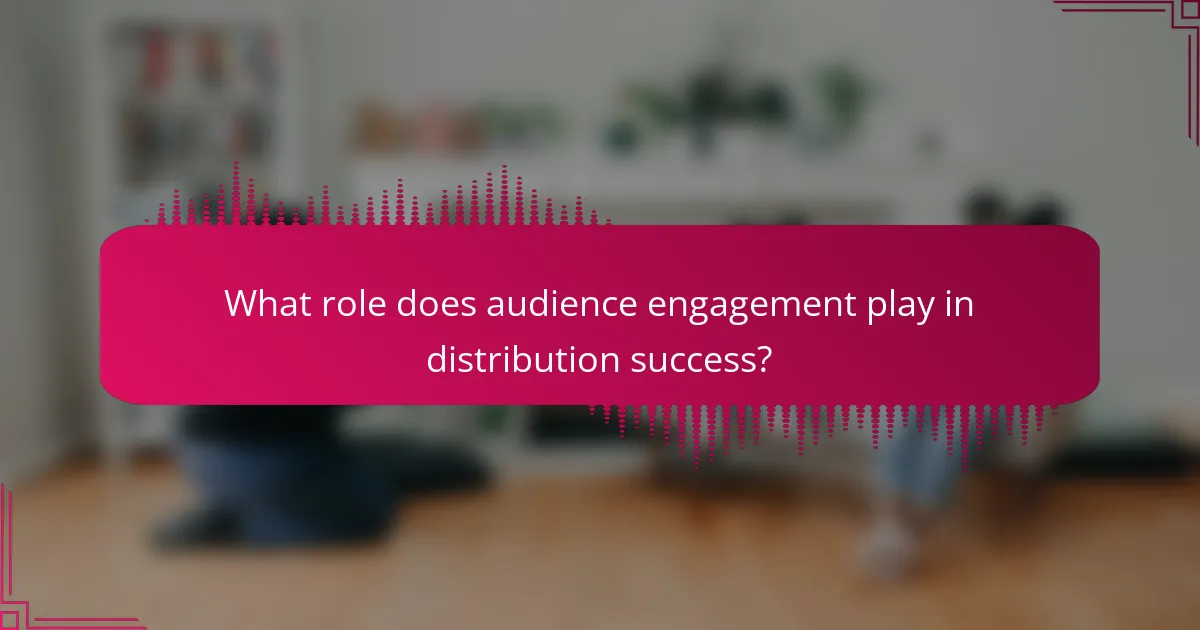
What role does audience engagement play in distribution success?
Audience engagement is crucial for distribution success as it fosters loyalty and amplifies reach. Engaged listeners share music, increasing visibility and potential revenue. Additionally, feedback from the audience can guide marketing strategies and content creation. Independent musicians benefit from building a strong community, leading to sustainable growth and opportunities. Engaged fans are more likely to attend live performances and support merchandise sales, enhancing overall profitability.
How can musicians leverage social media for effective distribution?
Musicians can effectively leverage social media by using platforms to share their music, engage with fans, and promote events. Social media allows for direct interaction, enhancing audience connection and expanding reach. Utilizing tools like analytics helps track engagement and optimize content. Consistent posting and collaboration with influencers can further amplify visibility and distribution.
What strategies enhance audience reach and retention?
To enhance audience reach and retention, independent musicians should utilize targeted social media marketing, email newsletters, and streaming platforms. These strategies allow for direct engagement and consistent content delivery, fostering a loyal fanbase.
Social media marketing enables musicians to connect with fans through regular updates and interactive content. Email newsletters provide a personal touch, delivering exclusive content and announcements directly to fans. Streaming platforms offer wide accessibility, allowing for increased visibility and listener growth.
Investing in analytics tools can further optimize these strategies by tracking audience behavior and preferences. This data helps refine content and distribution methods, ensuring musicians effectively engage their audience.
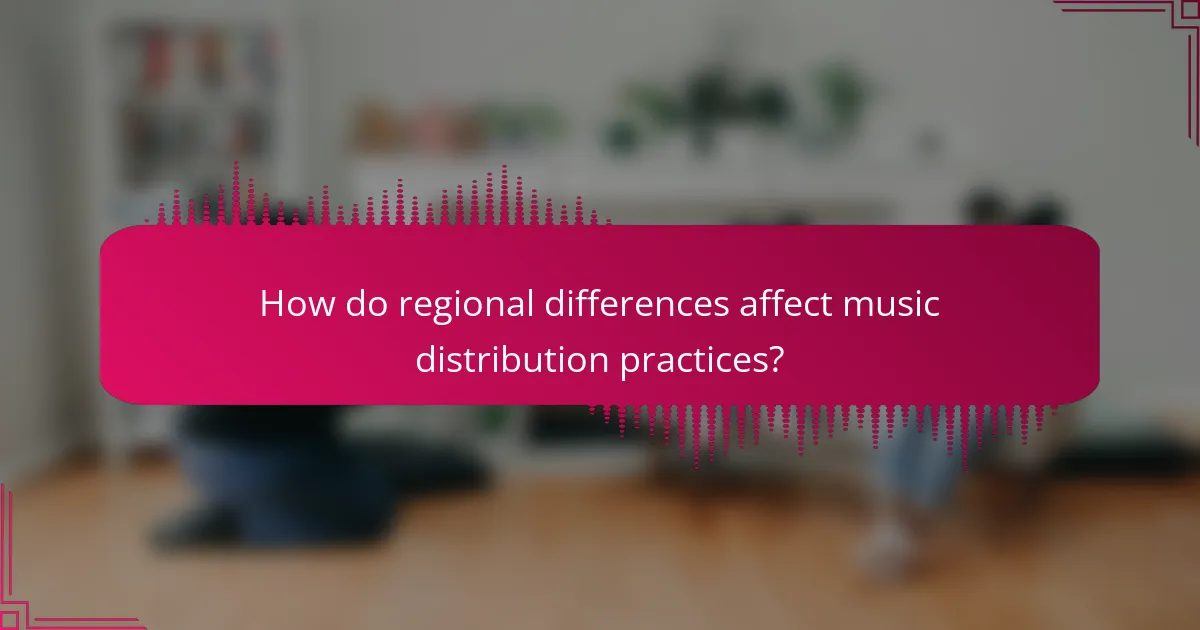
How do regional differences affect music distribution practices?
Regional differences significantly influence music distribution practices by affecting artist visibility, audience engagement, and platform preference. In regions with strong local music scenes, independent musicians often rely on local distribution channels and community events to reach their audience. Costs vary based on regional market dynamics, with some areas offering more affordable digital distribution options. Tools like social media and streaming services are adapted to regional preferences, enhancing or limiting access based on local trends. Understanding these regional nuances is crucial for independent musicians to optimize their distribution strategies effectively.
What unique challenges do independent musicians face in various markets?
Independent musicians face unique challenges in various markets, including competition, distribution, and audience engagement. They often struggle with limited resources and visibility, making effective distribution essential. Costs associated with distribution can vary widely, impacting their ability to reach target audiences. Tools like digital distribution platforms offer solutions but require strategic selection to optimize reach and minimize expenses.
Which distribution methods are gaining popularity in specific regions?
Digital distribution methods are gaining popularity among independent musicians in various regions. In North America, platforms like DistroKid and TuneCore are favored for their user-friendly interfaces and extensive reach. In Europe, Bandcamp and SoundCloud are increasingly popular, allowing artists to connect directly with fans. In Asia, services like Tencent Music are rising due to their integration with social media. Each platform offers unique features that cater to regional preferences and market dynamics.
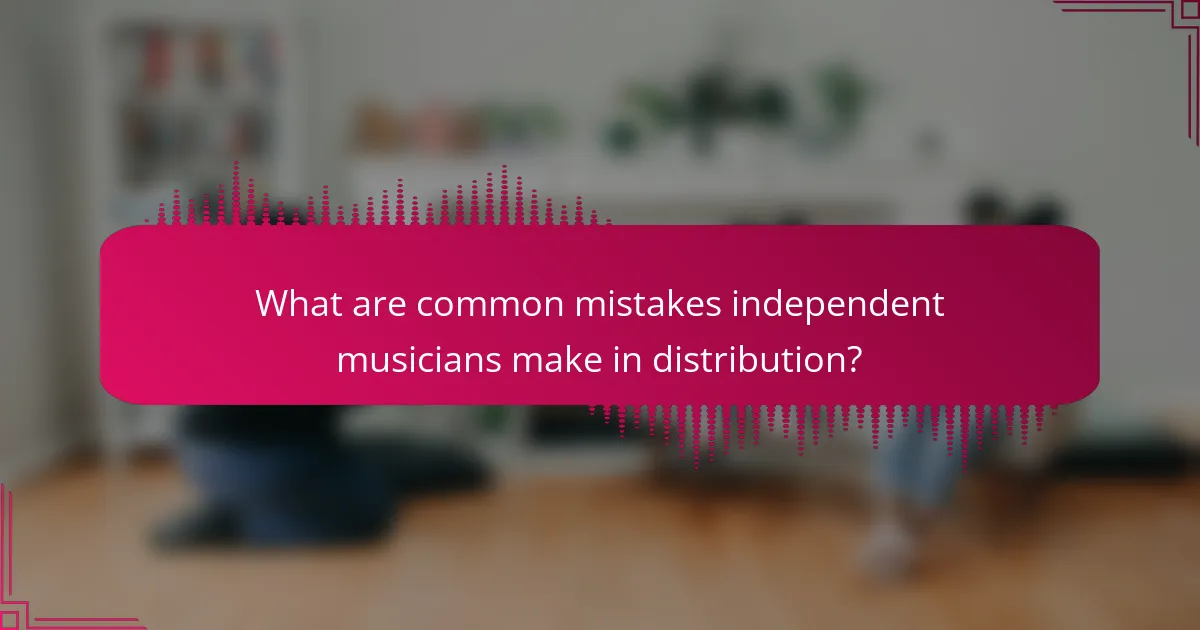
What are common mistakes independent musicians make in distribution?
Independent musicians often make mistakes in distribution that hinder their success. Common errors include neglecting to research distribution platforms, failing to optimize metadata, and overlooking the importance of timely releases. Additionally, many musicians do not actively promote their music post-release, which limits visibility. Ignoring analytics can also prevent them from understanding their audience and improving future releases.
How can musicians avoid pitfalls in their distribution strategy?
Musicians can avoid pitfalls in their distribution strategy by focusing on targeted platforms and understanding their audience. Researching distribution costs and tools is crucial for maximizing reach. Additionally, establishing clear goals and monitoring performance helps in refining strategies. Engaging with fans through social media can enhance visibility and drive sales.
What best practices can enhance distribution effectiveness?
To enhance distribution effectiveness, independent musicians should adopt a multi-channel approach. This includes utilizing streaming platforms, social media, and direct sales through personal websites.
1. Analyze target audience demographics to tailor distribution strategies.
2. Leverage analytics tools to track performance across platforms.
3. Collaborate with other artists to expand reach and share audiences.
4. Invest in promotional tools, such as email marketing and social media ads.
5. Maintain consistent branding across all distribution channels.
